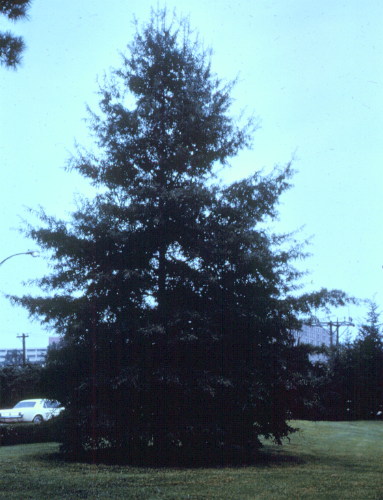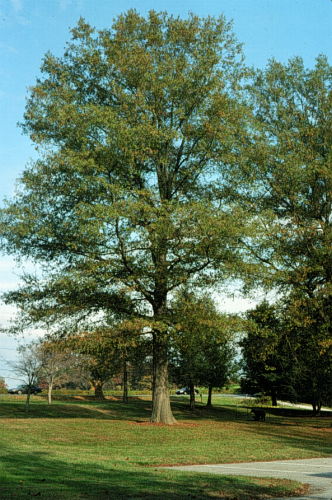Quercus phellos
Willow Oak
Fagaceae
ExpandHabitat
- native to the eastern coast of the United States from New York down through Florida and across to Texas
- zone 6, possibly warmer parts of 5
Habit and Form
- a medium-sized, deciduous tree
- 50 to 70' tall
- 30' to 50' wide
- pyramidal when young
- rounded, broad-rounded or upright rounded when mature
- fine texture
- rapid growth rate
Summer Foliage
- alternate leaf arrangement
- simple, deciduous leaves
- entire leaf margins
- lanceolate leaf shape
- 2" to 5" long
- bristle-tipped leaf apex
- dark green leaf color
Autumn Foliage
- yellow to bronzy-red fall color
- showy
- color develops late
- color is long lasting
Flowers
- monoecious
- male flowers are pendulous yellow-brown catkins
- blooms in May
- messy
Fruit
- acorn in pairs on singly
- 0.5" across or less
- pubescent
- bowl-like cap is striated with brown and black bands
- acorns mature in a second season
- fruit can be numerous
- attracts squirrels
Bark
- gray-brown bark color
- shallow ridges and furrows
- slender, smooth, reddish brown stems
Culture
- easily transplanted during dormant season
- prefers moist, well-drained soil
- full sun
- drought tolerant
- urban tolerant
Landscape Use
- parking lot island
- street tree
- buffer strip
- shade tree
- for large area
Liabilities
- no serious pest problems
- root rot
- borers and trunk canker
- orange-striped oakworm
ID Features
- sharp-pointed, ovoid, imbricate buds
- buds are chestnut brown and 0.25" long
- alternate leaf arrangement
- leaves are not lobed and have entire leaf margins
- bristle-tipped leaf apex
- willow-like leaves
- small acorns
Propagation
- by seed
- by cuttings
Cultivars/Varieties
'Pillow Oak' - A purported hybrid with Quercus palustris, this seedling selection features intermediate leaf shape and rapid growth. It was discovered as a cultivated plant by a South Carolina nurseryman.

